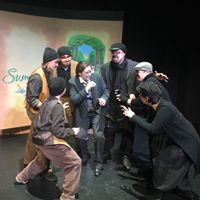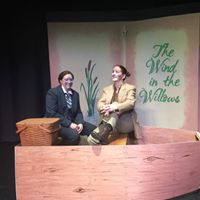THE WIND IN THE WILLOWS: ADAPTING CHILDREN’S LITERATURE TO THE STAGE
Kenneth Grahame wrote The Wind in the Willows during what is known as the Golden Age of British children’s literature. Consider that between 1900 and 1930:
- Beatrix Potter wrote and illustrated her many picture books for young children, beginning with The Tale of Peter Rabbit.
- A.A. Milne created Winnie the Pooh.
- E. Nesbit wrote her wonderful children’s novels, including The Railway Children, Five Children and It, and The Enchanted Castle.
- Frances Hodgson Burnett wrote A Little Princess, The Secret Garden and Little Lord Fauntleroy.
- J.M. Barrie created Peter Pan.
And this list is not exhaustive at all. There was also an explosion of American children’s literature at around the same time, The Wizard of Oz, Rebecca of Sunnybrook Farm and Pollyanna, to name a few.
The wonderful thing about all these books, to my mind, is that they are not written “down” to children, over-simplified and dripping with moral lessons. Rather, they are strong original stories which are amusing, engaging and often thought-provoking, but which are most appropriate to the genre (fairly new at the time) of children’s literature.
Up until then, we had had fairy tales–ubiquitous across many cultures–and nursery rhymes (many of which were actually political and social satire whose meaning became obscured across time), and religious stories which were often written to scare children into good behavior. But there is little if any literature for children before the middle of the 19th century–and the list contains many titles which today might be considered child-appropriate stories, but are no longer easily be read by children. (Examples: Treasure Island, Oliver Twist, Huckleberry Finn.)
In presenting The Wind in the Willows, afO enjoyed introducing a British classic to an American audience much less familiar with this delightful story. It was not without its challenges. The novel is a curious mixture of idyllic pastoral and madcap adventure. Mole, Rat and Badger sometimes wax philosophical, even lyrical, about the countryside, the river, the importance of home. Then there is the very striking chapter called ‘The Piper at the Gates of Dawn”–which seems either to be the most loved or most despised bit of the book, with its spiritual overtones. Most difficult of all to depict is Toad himself–he is pompous, impulsive, dishonest, volatile…and yet, again and again he is repentant, and generous to his friends.
James Belich has managed to capture both the serenity and the mayhem of the book, by making it revolve around Toad and his 

Other elements which had to be carefully decided included staging, costuming and makeup. We opted for a storybook set which suggested that the characters emerged from the book. The animal characters wore stylized face paint but were otherwise dressed as humans, as they behave throughout the book in quite human ways.


